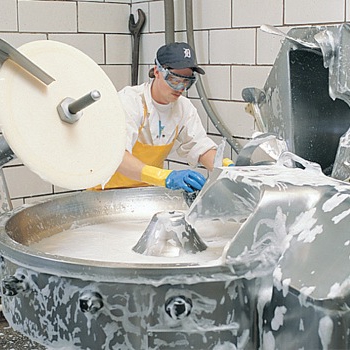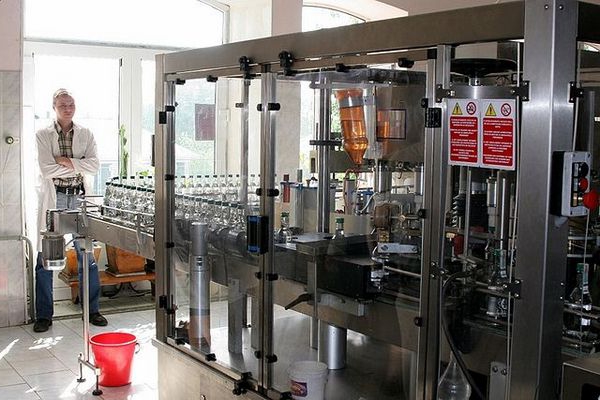The working activities of people take place in different conditions. The most important characteristics of this environment are industrial sanitation and occupational health. The influence of working conditions and directly technological processes on the health of employees is being studied in a special scientific field. Next, we consider the basics of hygiene and sanitation. 
General information
Industrial sanitation and occupational health are a set of measures and requirements. Their implementation is necessary when creating a healthy working environment. Occupational hygiene and sanitation are two related categories. To develop certain norms and requirements, it is necessary to study the working conditions, their impact on the state of the staff. The practical application of the results is part of the task of sanitation in production. In the framework of this area, the requirements are set for the maintenance of the territory, premises, ventilation, heating, lighting, as well as job planning.
Individual measures
An important task in ensuring healthy working conditions is personal hygiene. In the narrow sense, it is understood as the regimen of the day, body care, the cleanliness of bedding and underwear, shoes, outerwear and other household items. Sanitation and hygiene are important in preventing injuries and morbidity. Violation of standards and non-compliance with requirements may have a negative impact not only on the person himself, but also on people around him. This can cause poisoning, the spread of infections, accidents.
Hygiene and sanitation
Within the framework of these sectors, the influence of the working environment and technological processes on the human body is studied, development and subsequent implementation of standards for the implementation of measures to ensure favorable conditions are carried out. This set of measures is also aimed at preventing the development of occupational diseases. Scientific research is carried out in the following areas:
- Industrial toxicology. In the framework of this area, the development of the maximum permissible concentrations of harmful compounds in the work environment and the implementation of measures to prevent occupational poisoning (intoxication) are carried out.
- Physiology of labor. This area explores work processes, their impact on human condition. Measures are also being developed to prevent fatigue and increase labor productivity.
- The study of various types of dust in the air of workplaces. This issue is dealt with in the framework of such a discipline as microbiology. Sanitation and hygiene are generally closely associated with many scientific fields. The study of the composition of dust, its concentration and impact on people allows us to determine the maximum possible content in the air. This, in turn, helps prevent occupational dust diseases (pneumoconiosis).

- The study of the impact on the health of external factors of the working environment. These include, for example, ionizing radiation, meteorological features, vibration and noise, electromagnetic radio frequency waves, and more. In the framework of this direction, measures are also being developed for the prevention of pathologies that can be triggered by these factors.
- Physiology of Nutrition. Sanitation and hygiene envisage the development of a specific eating regimen, examine the quality of products consumed by employees, and develop standards.Hygiene and food sanitation contribute to the prevention of poisoning, the prevention of personnel fatigue.
Research Features
Industrial sanitation and hygiene provides for regular medical examinations of personnel. In working conditions, employees are often exposed to high and low temperatures, various kinds of radiation, toxic compounds, dust, vibration, noise, electromagnetic waves, as well as various combinations of these factors. All this can lead to certain disorders in the body. This, in turn, can contribute to a decrease or loss of performance. The rules of sanitation and hygiene must be strictly observed at any enterprise, especially with regard to the food industry. Violation of the requirements, which include sanitation and hygiene, can lead to quite serious consequences for the population. 
Practical activities
To prevent and eliminate the adverse effects of harmful factors and the consequences of their impact, a study is made of the characteristics of technological processes, equipment and materials (raw materials, intermediate, auxiliary, by-products, waste). Sanitation and hygiene provide for a detailed study of the professional and general incidence of personnel, personal protective equipment, the effectiveness of ventilation and lighting installations and devices. Many enterprises use conveyor-assembly and production lines, as a result of which the labor process becomes automated and mechanized. All this, freeing a person from severe physical stress, requires an increased concentration of vision and attention. In this case, sanitation and hygiene are of particular importance in ensuring healthy conditions. At such enterprises, it is necessary to establish the optimal mode of operation. It should provide high performance, without violating the physiological state during the work shift. The standards established in Russia guarantee the preservation of the health of workers.
Dangerous and harmful factors
The list of AFPF includes:
- collapsing structures;
- moving mechanisms and machines, moving workpieces, materials, products, moving elements of production equipment;
- high gas contamination and dustiness of air in the working area;
- reduced or increased surface temperature of materials, equipment;
- high level of noise, infrasound, vibration, ionizing radiation, ultrasonic vibrations;
- infrared or ultraviolet radiation, static electricity;
- humidity, increased or decreased temperature, air mobility in the working area;
- lack or lack of daylight;
- high voltage of a magnetic or electric field;
- the presence of sharp edges, burrs, rough areas on the surface of materials, blanks, equipment, tools;
- reduced or increased air ionization;
- the location of the workplace at high altitude relative to the surface of the earth;
- high voltage in electrical circuits, the closure of which can pass through the human body;
- reduced or increased barometric pressure or its sharp change in the working area.

Classification of chemical factors
In accordance with the nature of the exposure, chemical factors are divided into:
- mutagenic;
- carcinogenic;
- affecting reproductive function;
- annoying;
- toxic.
Separation in this category is carried out in accordance with hazard class. There are classes of chemical factors:
- Low hazard (4 class). These include gasoline, ammonia, acetone and other compounds.
- Moderately hazardous (Grade 3). This includes tea, camphor and more.
- Highly hazardous (2 class). This category includes alkalis, acids and other compounds.
- Extremely dangerous (Grade 1).These include lead, mercury and other substances.
Assistant Sanitary Doctor: Basic Information
A person with a secondary specialized medical education is admitted to this position. The doctor’s assistant must be trained in the relevant specialty “Sanitation and Production Hygiene”. The appointment and dismissal of a person from office is carried out by order of the head of the enterprise in accordance with applicable law. The assistant submits directly to the sanitary doctor or to the head of the unit (laboratory, department), and in the absence of a superior employee, to the deputy or head of the enterprise. 
Important information
The health care assistant must know:
- Methods of monitoring compliance with existing rules, hygiene standards, requirements.
- The basics of legislation on health care, as well as legal acts that govern the activities of relevant institutions.
- The main organizational and administrative provisions in accordance with which the functioning of the Sanitary Inspection and its structural divisions is carried out.
- Basic norms of the Labor Code.
- Standards for fire protection, safety.
- Rules of the company.
Job responsibilities
These include:
- Exercise control over the conduct of hygiene measures, compliance with existing standards and requirements of sanitation in accordance with applicable law.
- Providing registration, accounting and statistical processing of data on incidence.
- Participation in the planning of work on the implementation of preventive vaccinations, as well as control over their implementation.
- Inspection of the objects of the current sanitary and epidemiological surveillance with sampling for research in the laboratory.
- Qualified and timely execution of orders, instructions and instructions of the management, compliance with regulatory legal acts on their activities.
- Compliance with disciplinary requirements, fire regulations, sanitary-epidemiological and technical safety.
- Prompt adoption of measures (including timely informing superiors) to eliminate violations that pose a threat to employees.
- Systematic training.
- Analysis of information after medical examinations of workers employed in hazardous work or exposed to the negative influence of hazardous factors.

Doctor Assistant Rights
An employee may:
- To request, receive and use information materials and legal documents that are necessary for him to perform official duties.
- To pass certification in the manner prescribed by law with the right to receive appropriate qualifications.
- Participate in scientific meetings and conferences, where the subject of consideration are issues related to its activities.
- Attend continuing education courses at least 1 time in five years.
A responsibility
The physician assistant is responsible for:
- High-quality and timely fulfillment of the duties assigned to him.
- Organization of their own work activities, qualified and high-quality execution of orders and instructions.
- Timely and competent execution of official documents.
- Providing statistical and other information on their activities in the prescribed manner.
- Improper performance of duties or evasion of compliance with the requirements stipulated in the job description.
- Violations committed in the implementation of activities.

Finally
The health of the country's population is directly related to the social structure. Activities aimed at improving the condition of people are most effective when carried out on a large scale. At Russian enterprises, established hygiene standards are widely used.Compliance with the requirements ensures not only the preservation of health, but also prevents the development and spread of various diseases. This, in turn, prevents decline or disability.
Compliance with requirements and compliance with standards adopted in Russia is mandatory for enterprises and institutions of all sectors of the country's economy. This provision is recorded in the relevant legislation. Various specialists are involved in the implementation of tasks to ensure the protection of health and labor. For example, maintenance and inspection of equipment is carried out by designers, construction technologists and other professionals. Thanks to research carried out to ensure healthy working conditions, innovative methods are developed and implemented that can significantly reduce or eliminate the completely negative impact of various production factors.








